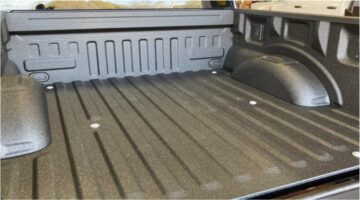Currently, many areas of the country are suffering from severe flooding. Which of course brings with it the high risk of driving into a flooded area of a road we drive on every day. Sudden flash floods can happen with virtually no notice. The road you drove to work on this morning could just as quickly have a foot or more water over it, by the time you drive back home tonight. Flash floods and flooded roads present a unique and very dangerous situation for you and any passengers you have in the vehicle with you.
The Facts
According to the NOAA, flash floods can occur in dry creek and river beds just as much as in running creeks and rivers. Flash floods typically happen with little to no warning and cause water levels to rise significantly in minutes. According to experts, the last thing you should do is drive your car into floodwaters running across the road. Since the water could be a lot deeper than it appears and could hide washed out roads or deep holes cut in the road surface, it can be very easy to misjudge the depth of the water, especially when it’s dark outside.
FEMA says that as little as six inches of water is enough to float a car causing you to lose control, twelve inches is enough to wash the average passenger car away. If you think you are safe in an SUV or truck, it only takes 2 feet of water to wash you along with the flow. Approximately 75 people die in flash flood-related vehicle accidents every year.
What You Should Do
- Remain calm at all times.
- Turn on your hazard lights and headlights.
- Unbuckle your seat belt.
- Remove your jacket or any other heavy clothing.
- Roll your window down (even electric windows should work unless the car is fully submerged.
- If the window doesn’t roll down, use a tool or the headrest of your car to break it out. Car headrests are easy to remove, and they have metal stands designed with a point to help you break out the glass.
- You can either climb out through the window or wait for the water pressure to stabilize on both sides of the door, then open the door and swim out. Be sure you call 911 as soon as you are safe.
What You Should Not Do
- Most importantly of all DO NOT panic!
- Don’t waste time and energy trying to open the door, the water on the outside is exerting hundreds of pounds of pressure you cannot overcome
- Never waste time trying to save your possessions, they can be replaced and are not worth dying for.
- Never try to break the window out until the water pressure on both sides is almost equal. While this means waiting until you only have a few inches of air left, if you smash the glass too soon, the window will implode showering everyone in the car with glass shards.
- Do not stay with your car, get away from it as quickly as possible.
- Never stand on the roof once you’re out, you will likely be washed away with it.
If you live in an area that is prone to torrential rainstorms and flash floods, it pays to ensure you have the best car insurance coverage you can afford. Not all insurance policies cover flood damage, so be sure you choose one that does. While it may not always be possible to avoid driving into a flooded road, if you see water across the street and are not sure how deep it is, your best defense is to retreat and find an alternative route.










